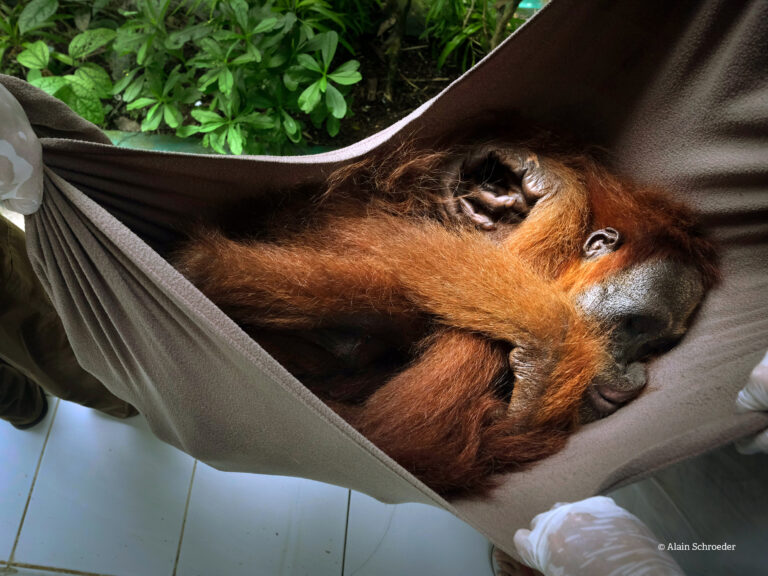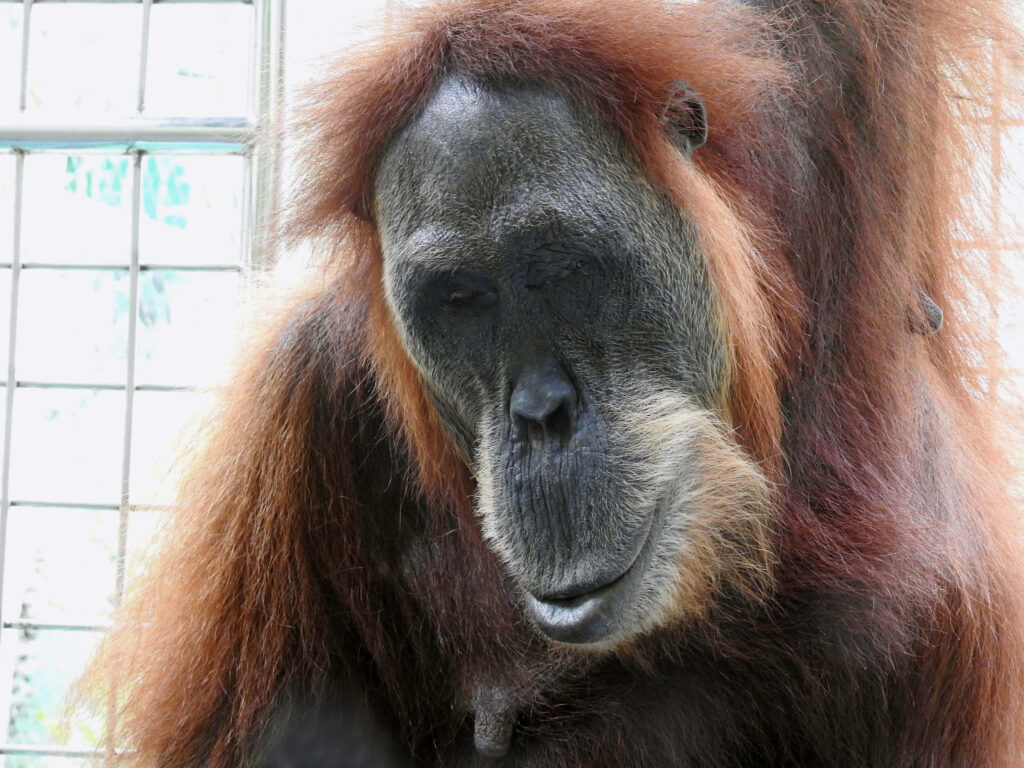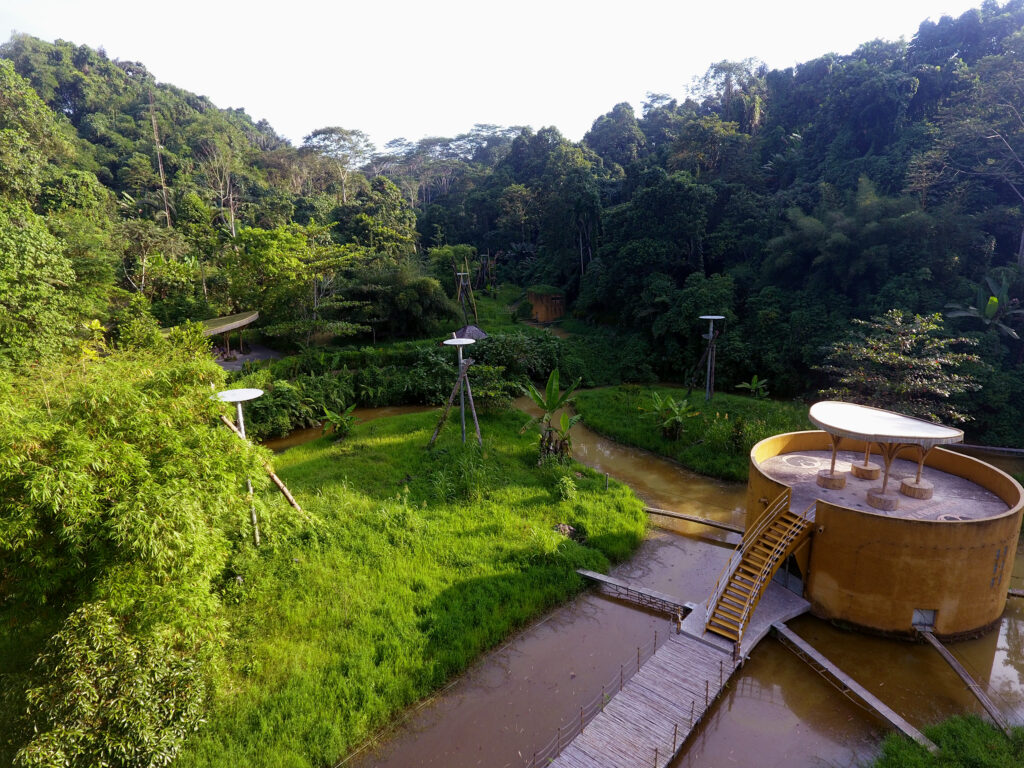Hope – a traumatised orangutan mother

Hope – a traumatised orangutan mother
With patience and diligence on the way to a dignified life
We love to share stories about successful reintroductions. But at SOCP’s rescue and rehabilitation station, we also care for animals whose futures do not look so bright. These are our permanent patients who can never be reintroduced into the wild because they would not be able to survive there. They present us with special challenges to care for them, as Hope’s example shows.
A sad biography
Hope was brought to the sanctuary on 10 March 2019 as an adult female orangutan with severe injuries, along with her baby. While trying to protect crops from the hungry animal, people shot at her with air rifles and severely injured her. Unfortunately, Hope not only lost her eyesight as a result; her baby died on the way to the station as well. After successful operations and a lot of patience, Hope’s physical damage was healed. However, the loss of her baby severely traumatised the mother. She shows this in many ways: The quiet, introverted animal does not like to meet our caretakers and she is still deeply insecure and in mourning. Various measures are taken at the station to address the special needs of any particular animal. This way we can improve their quality of life as far as possible. We did the same with Hope and last summer her condition seemed to have stabilised.

An unforeseen event
In July last year, many orangutan babies were brought into the sanctuary in a short period of time. Baby cries filled the clinic and could also be heard by Hope in her enclosure. From one moment to the next, Hope no longer wanted to eat or drink and subsequently refused food for a whole week. This worried our care team greatly, as it showed that even small events could unsettle Hope again. She was immediately moved to a more distant enclosure where she could regain her composure. We also reduced the number of keepers so as not to unnecessarily disturb the traumatised animal.
Every patient is unique
The stories of the orangutans on the care unit are unique, each animal has its own needs and prospects for the future. For Hope, this means that every day our team works with a lot of creativity and all the knowledge at our disposal to make her rehabilitation a success. Nevertheless, Hope will only be able to spend the rest of her life in care. Her place in the “Orangutan Haven” is safe in any case.




